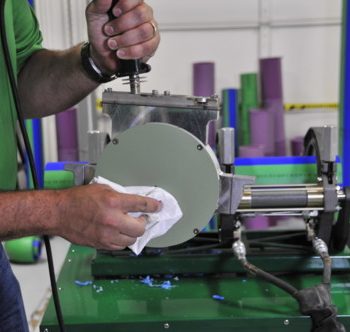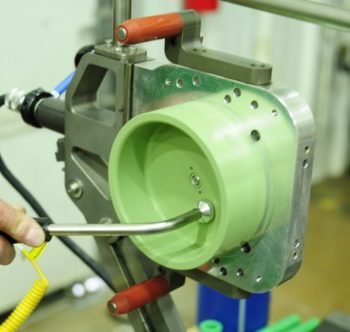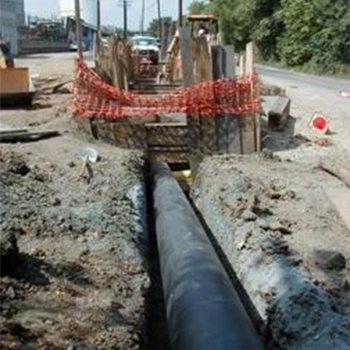A pyrometer is an essential tool to have on fusion jobsites. You will need one to ensure that you have the right temperature for fusing pipe. If the temperature isn’t right, the quality of your joints might not be either.
Here’s what you need to remember:
Go by the surface temperature, not the internal temperature. The thermometer in the heater body reflects the internal temperature only. It is not the actual surface temperature of the heater butt plates which is what you need to measure to achieve a proper melt.
Hold properly and check the surface temperature periodically. Make sure you are holding the end of the pyrometer flat against the surface with pressure to get a correct reading. Heater plates should be checked prior to every fusion so that heater temperature adjustments can be made if necessary. Be aware that if you’re fusing pipe in extreme cold, heat or strong winds, the surface temperature of the heater can change.
Multiple check points. Check the heater surface temperatures where the pipe will have contact on up to four points on each side of the butt plates which can be recorded on the McElroy DataLogger®. This ensures that the heat is spread evenly throughout the plate to produce an even melt pattern and quality joint.
Know the correct temperature. Follow the manufacturer’s recommendations for the proper surface temperature of the butt plates. This can range anywhere from 400 to 510 degrees depending on the kind of fusion you are doing. Once you have the right temperature, you can recalibrate by adjusting the heater dial to match the temperature on the pyrometer.
Keep your plates clean: To achieve the proper melt, the butt plates must be clean. Make sure to clean the heater butt plates before every fusion with a clean, non-synthetic cloth to keep it free of debris. This also prevents an accumulation of plastic pipe residue which can result in loss of surface temperature and pipe sticking. And when your heater is not in use, keep it in its insulated heater stand to protect it from the elements.
Replace worn butt plates as needed: For optimal use, make sure the nonstick Teflon coating on your butt plates has not worn off. McElroy recommends replacing worn butt plates to ensure an even melt pattern and quality fusion. Contact your McElroy distributor for more information about spare parts and accessories or visit mcelroy.com/fusion.



